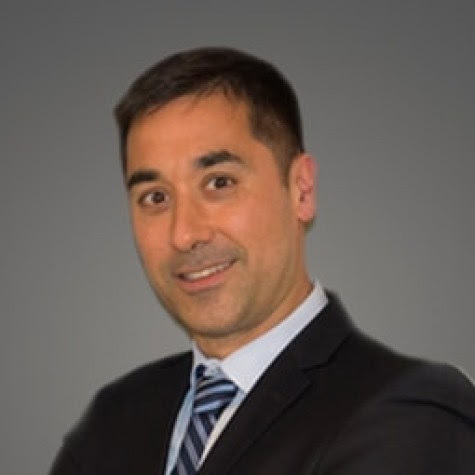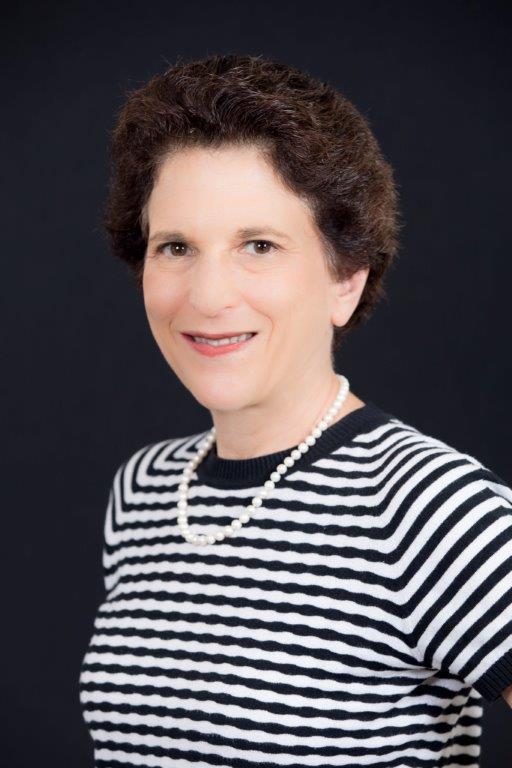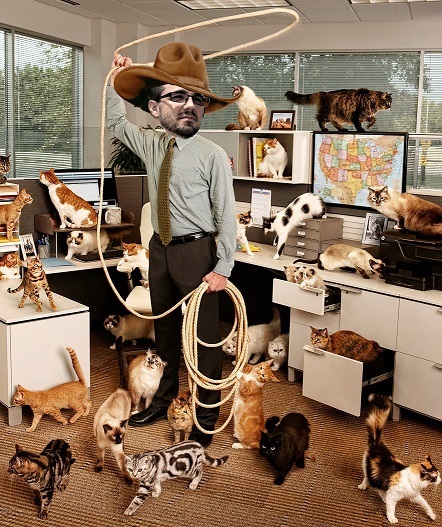
We covered the recent Medicaid news with Jerry Dubberly w/ Myers and Stauffer, Joel Menges w/ The Menges Group and Barb Witte.

We covered the recent Medicaid news with Jerry Dubberly w/ Myers and Stauffer, Joel Menges w/ The Menges Group and Barb Witte.

We talked to Medicaid and political expert, Alexander Shekhdar about the impacts of the current Senate bill on Medicaid.

Avoidance of Antibiotic Treatment for Adults with Acute Bronchitis – The percentage of adults 18–64 years of age with a diagnosis of acute bronchitis who were not dispensed an antibiotic prescription. The measure is reported as an inverted rate [1 – (numerator/eligible population)]. A higher rate indicates appropriate treatment of adults with acute bronchitis (i.e., the proportion for whom antibiotics were not prescribed).
Further reading

Substance Abuse Mental Health Services Administration – HHS OPDIV which manages substance abuse and mental health programs.
Further reading

Quality Assurance/Quality Improvement – Related to clinical requirements and best practices. Whereas quality assurance is typically defined as systematic inculcation of safety and quality processes, quality improvement suggests a retrospective and self-reflective effort to identify areas of suboptimal performance and dedication to improving them.
Further reading
https://www.health.ny.gov/health_care/managed_care/docs/quality_strategy.pdf

Personal Health Record – A bi-directional health record that allows patients easy access to and the ability to input additional relevant health information.
Further reading

Medicaid Who’s Who: Stacy Mays – Chief Operating Officer, UNC Health Alliance and the UNC Senior Alliance
Q: In which segment of the industry are you currently involved?
A: I am leading the transition to Alternative Payment Models (APMs), Value Based Care and Clinical Integration for all payer segments, including Medicaid for a $5 billion academic health care system.
Q: What is your current position and with what organization?
A: My current position is Chief Operating Officer for the UNC Health Alliance and the UNC Senior Alliance, the clinically integrated network and Medicare Next Generation ACO of the University of North Carolina Health Care System.
Q: How many years have you been in the Medicaid industry?
A: Although it has not been my exclusive focus, I have been in the Medicaid industry for more than 30 years. My work began with one of the original Robert Wood Johnson grantees responsible for initiating managed care in the Medicaid segment. There was no roadmap. In many ways, we were trailblazing!
Q: What is your focus/passion? (industry related or not):
A: From an industry perspective, my passion is creating a care delivery enterprise that promotes clinical excellence and seamless care integration along with financial structures that align incentives for providers and put the patient first. I’ve been an industry innovator my entire career. With evolving technology and payment models, we have an opportunity to achieve changes that have been discussed for many years but not widely delivered upon. Behavioral health integration and a focus on social determinants of health are two that are top of mind.
From a personal perspective, my family is my focus. Supporting my young adult children as they navigate through college to what comes next is extremely important. If I can help them avoid some bumps along the road, I’ll consider that a success.
Q: What is the top item on your bucket list?
A: I’m fortunate that most of the things I have wanted to do in life I’ve been able to do. My bucket list is simple, spending more time with family and traveling a bit more.
Q: What do you enjoy doing most with your personal time?
A: In my personal time, I enjoy working out, volunteering and serving on Boards for causes I care about and spending time with my vast menagerie, especially my two rescue dogs, Petey and Willy, and my cat, Kitten. The menagerie currently includes four goats and a horse in addition to the domestic animals. It has included many other critters over the years.
My favorite workout is boxing. I train several times a week and even get in the ring occasionally to spar with my coach. Boxing is a great workout, both physically and mentally. It forces you to let go of all distractions and focus completely on the task at hand.
I also make volunteering and Board service a priority. Two organizations that I work with currently are a canine rescue that has re-homed over 1000 dogs in the past 10 years and an amazing organization that truly changes lives by providing housing, counseling, job training, child care and other support services to substance addicted pregnant women.
Q: Who is your favorite historical figure and why?
A: My favorite historical figure is Albert Einstein. It’s amazing to me that one individual could challenge so many long held beliefs and change the future course of science in so many profound ways.
Q: What is your favorite junk food?
A: Chocolate drizzled popcorn.
Q: Of what accomplishment are you most proud?
A: From a career perspective, I’m pretty proud of what we have accomplished here at UNC over the past 2 years. We created a clinically integrated network partnering with 2,000 independent providers throughout the State and implemented value based contracts serving almost 100,000 individuals; built a Medicare Next Generation ACO with global risk for 22,000 Medicare beneficiaries; and executed a joint venture to own a Medicaid Managed Care plan with 10 other North Carolina health systems.
Q: For what one thing do you wish you could get a mulligan?
A: As a college student, I wished I had studied abroad.
Q: What are the top 1-3 issues that you think will be important in Medicaid during the next 6 months?
A:

Helping you consider differing viewpoints. Before it’s illegal.
Article 1: Has Medicaid Made the Opioid Epidemic Worse? The National Review, Sam Adolphsen, July 5, 2017
Clay’s summary: Heck yes, it has. Duh.
Key Passage from the Article
In 2015, the seven states with the highest drug-overdose death rates were West Virginia, New Hampshire, Kentucky, Ohio, Rhode Island, Pennsylvania, and Massachusetts. These states all have something else in common: All were among the 31 states (not including D.C.) that expanded Medicaid through Obamacare. Two questions must now be asked: Did expansion actually make the problem worse? And was Medicaid partly responsible for initiating the problem to begin with? Ohio, which has enrolled more than 700,000 adults in its Obamacare Medicaid expansion, is seeing worse problems with opioids than ever before. This year alone, the state is on pace for more overdose deaths than the entire United States had in 1990, according to an Ohio county coroner. It’s important to recognize that the problem ultimately stems from legal prescription drugs, not the illegal drug market — though many prescription-drug addicts do switch to heroin as a cheaper alternative. According to Andrew Kolodny, a Brandeis University senior scientist and the executive director of Physicians Responsible for Opioid Prescribing, “overprescribing of opioids is fueling the epidemic.” CDC data indicate that overdose deaths involving prescription opioids have quadrupled since 1999, and that prescription opioids now account for half of all opioid-overdose deaths.
Article 2: Democrats’ Fearmongering Over Medicaid Ignores Just How Bad the Program Is, The Daily Signal, Betsy McCaughey, July 5, 2017
Clay’s summary: In all the bravado about how Medicaid will be gutted, few are talking about the shame of the inferior nursing home care Medicaid pays for every day and has for decades. If anyone has been in a position to address the issue, Medicaid officials have- and its not enough to just say there’s not enough money.
Key Passage from the Article
Because even rudimentary infection prevention is lacking, one-quarter of residents pick up dangerous, drug-resistant bacteria, according to new research by Columbia University School of Nursing. Columbia’s Carolyn Herzig warns infection rates are increasing across the board and action is urgently needed.
Medicaid recently adopted new standards calling for more infection precautions, but delayed the start date to November 2019. Why delay when hundreds of thousands of elderly residents will die from infection in the meantime?
Don’t count on the media to cover these deaths. The Washington Post is busy claiming repeal “takes a sledgehammer to Medicaid.” The New York Times reports that “steep cuts to Medicaid” will force some seniors out of their nursing homes.
Here’s the truth: There are no “cuts.” Medicaid spending will continue to increase every year, though at a slower rate.
The real threat to seniors isn’t Medicaid funding levels. It’s that Medicaid officials tolerate substandard nursing home care, when they could use the program’s market clout to demand safer care. About 66 percent of long-term residents are paid for by Medicaid.
The federal government rates nursing homes from one to five stars, based on periodic inspections, staffing levels, infection rates, and other quality measures.
But even nursing homes that get the lowest one-star rating year after year—indicating substandard care—are allowed to stay open. They should be shut down.
Article 3: How A Bogus Claim About Medicaid Made It Into The Los Angeles Times With No Pushback, The Federalist, Jonathan Ingram, July 5, 2017
Clay’s summary: Expanding Medicaid to more healthy adults came at the cost of reduced coverage for the most vulnerable in multiple states. Also- the MSM hides facts that might tarnish the optics on ACA? No way! Somebody should bodyslam those guys. But not DDT – that’s taking it too far.
Key Passage from the Article
While Ohio eliminated Medicaid eligibility for more than 34,000 seniors and individuals with disabilities, it was busy moving able-bodied adults to the front of the line under Obamacare. The expansion has been particularly tough on Ohio, where the Kasich administration promised the number of able-bodied enrollees would never exceed 447,000. By May 2017, expansion enrollment topped more than 725,000 individuals.
The result? Ohio’s Obamacare expansion has already run nearly $7 billion over budget, costing taxpayers nearly twice what was initially promised. The state’s share of those costs started coming due earlier this year, and those overruns are now crowding out funding for other state priorities like education, public safety, and services for the most vulnerable. In a state where Medicaid already consumes nearly half of the operating budget, cost overruns in the Obamacare expansion can easily lead to devastating cuts to other priorities.
This isn’t an isolated event, either. The enrollment explosion is happening in every state that expanded Medicaid under Obamacare. As a result, states are facing mounting costs far higher than they expected, forcing them to cut funding for other priorities or pass new tax hikes. Domenech was right when he remarked that Obamacare made able-bodied adults a top priority, crowding out funding for the most vulnerable. And he wasn’t lying when he said that more than 34,000 seniors and individuals with disabilities in Ohio were pushed out of Medicaid shortly after the expansion went into effect.
Article 4:
Clay’s summary: It’s getting harder to ignore the fact that organized crime is behind a lot of the bigger Medicaid frauds.
Key Passage from the Article
Fraud tends to cluster in certain areas and in certain treatment categories. The reason for that is that this fraud is not random, not just the result of some yahoo general practitioner in Eucheeanna padding his bills. It’s the work of organized crime. As Sparrow points out, when there is a criminal case filed against one of these fraud artists, then billing in a particular category — some years ago, it was HIV fusion treatments — falls off steeply, by as much as 90 percent. The implication here is that fraudulent billing may make up the majority of Medicaid and Medicare spending in some categories.

Patient Centered Medical Home – A model of patient-centric, culturally competent care delivery that is well coordinated and supported by primary care teams using HIT.
Further reading

For optimist readers- http://bit.ly/2uxE8Re
Soundtrack for today’s RoundUp pessimist readers. On second thought, let’s do 2 optimist songs this week cause ‘Murica is awesome and its her birthday week- http://bit.ly/2uxG6Rs
DON’T FORGET MONDAY’S SHOW ALL ABOUT THE SENATE BILL- Alex Shekhdar of MHPA will take us all to school on what BCRA means for Medicaid funding. Sign up for free- http://bit.ly/2ccl593
SHAMELESS PLUG FOR OUR NEW ONLINE TRAINING COURSE: Check it out. We released it after years in the making. Here’s the video ad for it- http://bit.ly/2twQCeF
BADGER STATE HAS BUDGET SURPLUS- You’re not alone: I had to do a double take myself. Wisconsin will close out this SFY with Medicaid $325M to the good. Recipe for this fiscal success? Slower enrollment growth and more federal cash. Less spending and more “revenue” from Uncle Sam. Whooda thunkit?
LITTLE AMERICA ROLLS OUT 2 PROGRAMS TO FIGHT THE OPIOID SCOURGE- Maryland launched 2 new programs on July 1 aimed at getting ahead of the opioid epidemic. The first one deserves kudos because it targets how we got into this mess in the first place nationwide – Medicaid prescribing rules. The second one increases payments to residential substance abuse providers to help deal with the carnage. MCOs will be key partners, leveraging CDC opioid reduction guidelines.
LAND OF LINCOLN MUST PAY ITS BILL (SORT OF)- A federal judge ordered Illinois to pay its $3B Medicaid tab (the state has been stiffing providers and MCOs for quite a while). The court order has the state paying all new bills in full and on time, and establishes a payment plan of $293M in Medicaid back payments a month until its paid off. According to IL state Comptroller Mendoza, the new ruling “takes the state’s finances from horrific to catastrophic.” Don’t worry Mrs. Mendoza, I am sure the judge will point you towards the money trees so you can fix all this. (Hint – they are through that tiny little door in the back of Congress, in the small orchard in the back. The trees in the White House gardens have been out of order since November).
DENIZENS OF BLUEGRASS STATE MUST PAY THEIR OWN WAY (SORT OF)- The Good Guvn’r Bevin submitted a revised waiver request this week, looking to require bennies to work 20 hours a week if healthy enough to do so. This is up from the previous plan which had an increasing scale starting at 5 hours a week, walking up to 20 hours after a year of coverage. The new plan starts at 20 hours day 1 of coverage. Savings estimates mark the change at about $2.4B for KY by 2022.
SPELL WEARING OFF IN LAND OF ENCHANTMENT- Long-time readers may remember New Mexico cracking down on behavioral health providers accused of rampant overbilling of Medicaid (this was back around 2013, focusing on 15 facilities). Seems the state is walking back some of its claims (encouraged by a judge), and the attempted recoveries have plummeted from a total of $9.6M to $896k. Current finger pointing includes use of an extrapolated sample that did not have supporting documentation. One of the bigger issues is that Medicaid payments were stopped to these providers, causing disruption to members. Several of the organizations have been exonerated by the state AG. Good article on the details of this in the twitter feed (@mostlymedicaid).
NATURAL STATE ROLLING IT BACK- Arkansas submitted its request this week to modify its magical waiver (the one where they put expansion bennies on the exchange). Changes include knocking eligibility back down to 100% FPL (it was 138% to get the ACA cash), adding work requirements for those deemed healthy enough to work, and ending an employer-sponsored premium subsidy program.
FARRIS’S FANTASTIC FRAUD FOLLIES– And now for everybody’s favorite paragraph. Let’s start the ticker and see who wins this week’s award. TN is taking Med Management, Inc (MMI) to court for $7M in bogus claims for pain management. John H. Johnson of Hollidaysburg, PA faces 7 years in the slammer for his role in a patient-referral kickback scheme that stole $1.1M from Medicaid. Johnson sent Medicaid members to Universal Lab for tests in exchange for kickback payments. Dawn Bentley of Detroit was sentenced this week for her role in a $7.3M Care and Caid scheme. She providing billing services for bogus physician claims in exchange for a 6% cut. He biggest client- Waseem Alam- plead guilty last year to a $33M take. Anna Young of Chadron, NE must pay back $309k after admitting to billing $102k without sufficient documentation for her mental health services (she has to pay back 3 times what she stole). Mrs. Bentley – you win this week’s award! You are the first biller I have come across offering a fraud outsourcing service. Kudos!
That’s it for this week. As always, please send me a note with your thoughts to clay@mostlymedicaid.com or give me a buzz at 919.727.9231. Get outside (cook out again this weekend- celebrate the 4th twice!) and keep running the race (you know who you are).
****
FULL, FREE newsletter@ mostlymedicaid.com . News that didn’t make it and sources for those that did: twitter @mostlymedicaid . Trystero: Il Padre ha mandato il Figlio a salvare il mondo